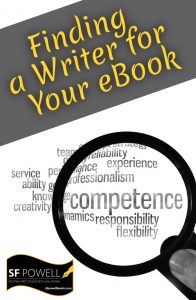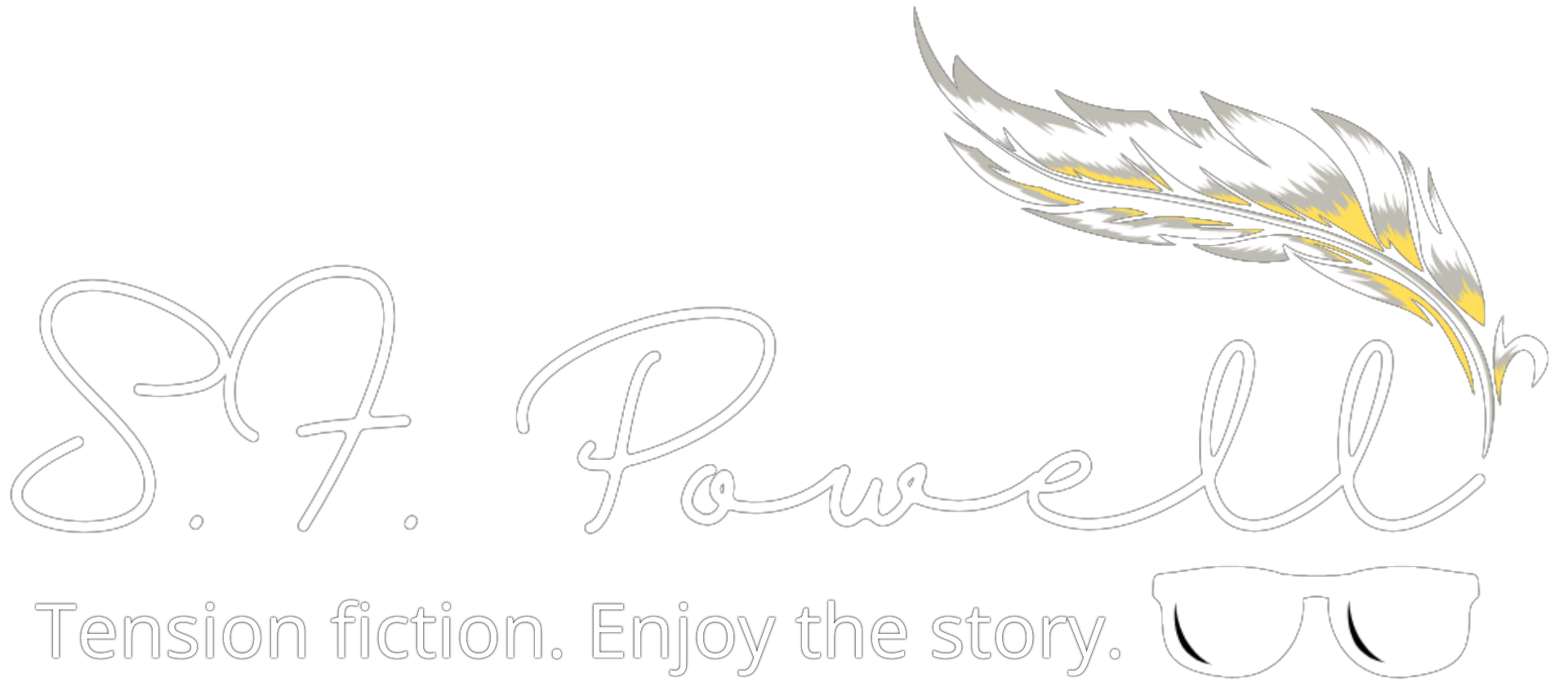Finding a Writer for Your eBook
 I’ve spent a few blogs being ‘serif,’ pondering the gloom and doom of stress and trying to stay above its fray by thinking positive, mentally bracing for stressful situations, and the like. But, as I’m a writer, I’m shifting discussion back in that direction, to talk a little about e-books and outsourcing their creation.
I’ve spent a few blogs being ‘serif,’ pondering the gloom and doom of stress and trying to stay above its fray by thinking positive, mentally bracing for stressful situations, and the like. But, as I’m a writer, I’m shifting discussion back in that direction, to talk a little about e-books and outsourcing their creation.
The term ‘e-book’ is self-explanatory: an electronic version of a book. They’re distributed in electronic formats and made available to readers via the internet. You likely have an e-book or five stored on your hard drive or in your ‘cloud.’ Most think of novels when it comes to e-books, but informational e-books are prominent. Informational e-books ‘specialize,’ providing pertinent content within some niche, and range from just a few pages to hundreds of pages.
If your e-book is a ‘mini’ e-book, less than fifteen pages, you likely don’t need a ghostwriter. But for extensive material, where you have expertise in a particular niche, but ‘writing’ isn’t in your wheelhouse, hiring someone who resides at ‘101 Writers Lane in Writersville, USA,’ is likely the better option.
Before the Search
Ultimately, a professional writer is responsible for writing the full draft and final version of your e-book. Allowing for profit considerations, a professional writer is also responsible for revisions based on any niche marketing recommendations.
So, what’s involved with outsourcing an e-book and finding the best writer for the job?
First, determining the scope of your project. Will this be a series of e-books, or are you throwing in all the marbles with one huge volume? Are you including numerous links, graphics, or videos? How much research or input (e.g. interviews) from SMEs will be necessary? Answering questions of this nature will help define the project’s size. Not that the scope can’t change (because it probably will). But, knowing the level of effort involved with arriving at your final e-book product, helps determine if writing your e-book is even worth pursuing.
Money & ‘Passion’ Considerations
Now that you know how big (or small) your e-book will be, see if hiring a professional writer is within budget. Consider:
-
-
- the e-book’s length
- the number of graphics involved (if any)
- the writer’s level of experience
- plus other factors (including the demand/popularity of your niche)
-
Costs can escalate quickly. And don’t get too hung up on the writer’s ‘pedigree.’ Saving a few hundred dollars by going with a less-seasoned writer, may work out for the better. A budget and knowledge of the going rate for professional writers, provides certain ‘negotiation’ parameters.
Next, research those similarly passionate about your niche subject. Because passion doesn’t necessarily equate with talent, passion alone won’t qualify them to write your e-book, but it’s a good starting point. Even if they aren’t hired for the job, you may want them involved with outlining the e-book, or contribute to final edits.
Social media, of course, is a resource for your ‘passion for niche’ research, but so, too, are professional organizations related to your niche/subject.
Finding the Right Writer
So, you know the scope, your budget. You’re excited all over again from doing your ‘passion for niche’ research. With everything looking feasible, promising even, you’ve decided to outsource your e-book. Now, it’s time to begin the selection process by considering and prioritizing key decision-making criteria, such as:
-
-
-
-
- Writer’s ‘pedigree’ (niche experience)
- Cost
- Review of writing samples (strengths and style)
-
-
-
For example, if price is priority #1 followed by solid writing samples, and lastly, ‘pedigree,’ you’d more readily consider hiring the less-skillful writer willing to work for a lower fee.
Depending on your comfort level, your search for writing candidates can be local to global. Conduct a local search with advertisements in local newspapers or trade magazines. A global search involves the internet (of course) and visiting websites with profiles and lists of writers wishing to outsource work. Social-but-professional sites like LinkedIn are ideal for narrowing-down your short list. Whether local, national, or global, your ‘Writer Wanted’ ad or proposal should request pertinent information you want potential candidates to provide.
Narrowing Things Down
Expect multiple responses to your ad. Evaluate these responses and eliminate the on-sight ‘duds.’ This is where your prioritized criteria comes into play. However, even if writing ‘strength’ isn’t your highest priority, if the writing samples are poor, it isn’t worth even the most affordable price (and it’s probably why they’re so affordable). Evaluate the remaining applicants using your prioritized list of criteria and rank them accordingly. Take your time. Review, compare, contrast … until you’re down to three writers worth pursuing.
Beyond the Résumé
Now, it all sounds good on paper, but a picture (and voice) speaks a thousand words. Interview your potential hires. Conduct interviews in person, via telephone, or online. Sometimes the impression on paper contradicts the person-to-person vibe. A bad interview destroys any desire to work with said writer for one day, let alone several months.
The interview process is important for learning whether or not project expectations can/will be met.
It’s also a time to iron-out things like: number of revision-runs, payment process, and scheduling to see how everything will (or won’t) fit the timeline. Working with only one facet (on paper vs. in person) in the working relationship is doable, but, ideally, the writer meeting both facets solidly is your best bet. It’ll be a pain, but if the interview process doesn’t go well, start from the beginning.
Okay, you’ve researched, reviewed, compared, contrasted, and interviewed beyond a capacity you thought humanly possible. But now, it’s decision-making time …
Go ahead. Take a breath and feel good about it. This is the moment you’ve worked (and worried) over.
Until next time, stay serif.

